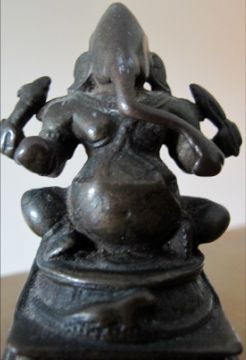ADDICTION AS ATTACHMENT

Addiction can be seen as an extreme case of what the Eastern spiritual traditions call attachment. The wise ones advised us not to be attached to the attractions and aversions of worldly life. Because all sensory pleasures, all relationships, and all material possessions are transient, their satisfaction will invariably fade, giving rise to discontent, followed by brand new cravings, and when those are satisfied … well, you know the story: the cycle continues. And continues. The only lasting happiness comes from complete absorption in the limitless Self whose very nature is bliss. So, we’re told to direct our yearning to the attainment of true liberation—moksha, nirvana, God realization, cosmic consciousness, or whatever term suits you.
Couldn’t be simpler, right? Well, not so fast. For one thing, serious addiction requires specialized treatment. But even our milder compulsions and dependencies can get tricky when seen as attachments. What does it really mean to be unattached? How does it translate to real life? An early Christian mystic observed that someone “who has tasted the sweetness of having no personal possessions” can find that “even the cassock which he wears and the jug of water in his cell are a useless burden, because these things, too, sometimes distract his mind.” If that’s true of monks, what about us, with our walk-in closets, our overstuffed pantries and our anything-at-a-mouse-click technology? How can you tell the difference between an unhealthy attachment and a healthy affection for something worthwhile or a passionate commitment to a worthy goal? When is giving something up a valorous spiritual exercise, and when is it a retreat from reality, or maybe even masochism?
Walk the spiritual path in earnest and you bump up against a lot of things that can be seen as attachments, but might not be attachments: certain pleasures and aversions; rituals and routines; assumptions, opinions and judgments; people and institutions; the desire for success and control; even the sense of self we call the ego. What does it really mean to be unattached to those things? Is it spiritually useful to give up your “attachment” to loved ones who depend on you? Would you want to forgo art or music because you’re “attached” to them? One of the great challenges of the spiritual path is to discern the difference between clinging to something and cherishing it in a healthy way.
One clue is the emotional charge that accompanies our desires and concerns. Feelings such as grasping and desperation suggest an imprisoning attachment as opposed to a healthy commitment. Most revealing is the fear of losing something (or not getting it in the first place). The thought “I can’t possibly be happy if I don’t have this” is probably Spiritual Delusion #1. The point is, what makes something an unhealthy attachment is the emotional energy it carries. We can love selflessly, and we can love possessively. We can have very little and be attached every bit of it, and we can have tons of goodies and be attached to none of it. So, whether it’s a relationship, a goal, a pleasurable substance, a behavior pattern or an attitude, asking yourself these questions might help you determine if it’s an attachment you should work on eliminating:
- Would having it serve my growth or hold me back?
- Would not having it be debilitating, mentally, physically or spiritually?
- Does wanting it cause me to cling, grasp or covet?
- How much does the prospect of losing it make me fearful or desperate?
- Will letting it go make me more free or less free?
Let’s be clear about one important distinction: non-attachment is not indifference. Confuse the two and you end up thinking you’re in some high spiritual state when all you’ve achieved is apathy. Here’s another pitfall: you can get attached to non-attachment. I’ve seen sincere people become so obsessed with letting go of possessions and entanglements that they deny themselves worthwhile things and turn detachment into an ego trip: “Look how unattached I am!”
Ultimately, the ideal of nonattachment is a reminder that the things that really count, like grace and love and inner peace, do not depend on anything outside ourselves. That perspective shifts the motivation from giving up something to gaining everything. And the real message is that nonattachment is more of a description than a prescription. It describes a state of inner peace that’s undisturbed whether or not we satisfy our desires or achieve our goals. That’s why transformative spiritual practices such as meditation and yoga are so vital. They not only help us deal with the stress that leads to addictions—and the stress of withdrawal—but they help us tap into the transcendent peace within. And when we do that, attachments that can otherwise consume us seem as nonessential as the toys we couldn’t let go of as children. Of course, when the inner peace fades again, we’re back on the treadmill … but maybe now it’s more like an exercise than a compulsion.
